If you’re headed to Cabo San Lucas this winter, you might want to consider some amazing activities beyond beach bumming and dining out. One of the main exciting activities in the area is whale watching. You can join a tour for a moderate price and experience all the beauty of these incredible creatures. Whales in Cabo come in many sizes and shapes, mostly visible from December to April. You’re likely to spot some well-known mammals like humpback whales who love to show off. Or, if you’re really lucky, you might some rare whales like minke or blue whales, some of the largest animals on the planet.
When to Go Whale Watching in Cabo San Lucas, Mexico
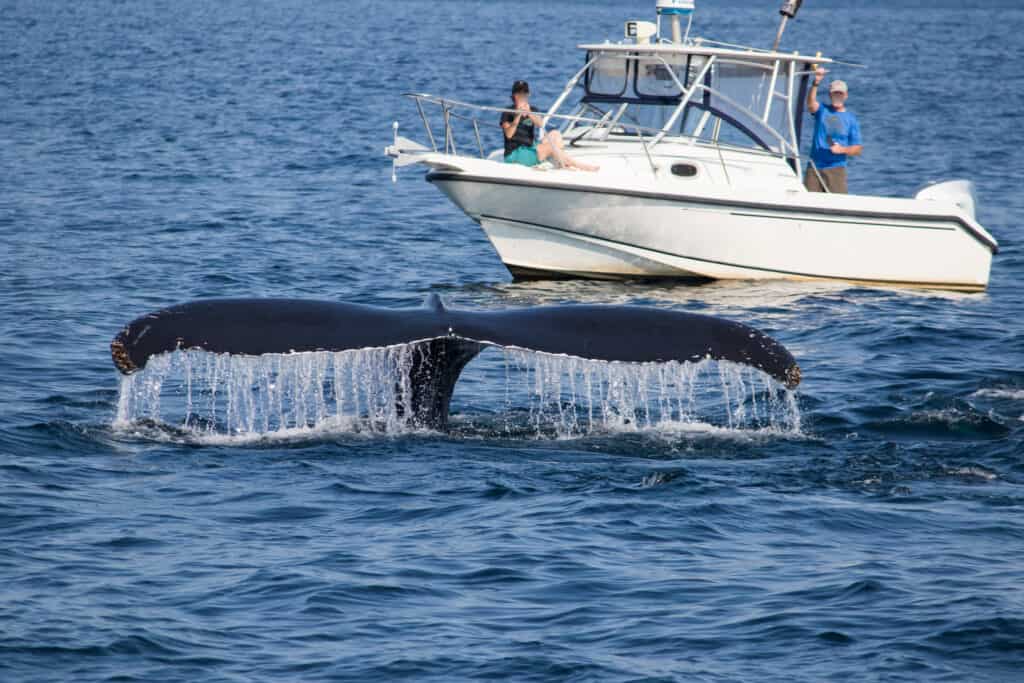
Whales in Cabo are plentiful! So, head out on the water for some incredible whale-watching opportunities.
©Mircea Costina/Shutterstock.com
Some species of whales in Cabo can be seen year-round, but most are in the area on the migration patterns at specific times. The official whale season is December 15 to April 15, but some years the whales come in early or leave late. Most folks report the best whaling-watching opportunities between January to March.
SEMERNAT monitors and sets the official whale season each year, so be on the lookout for updated information as you plan your trip.
What is the Best Time of Day for Whale Watching in Cabo?
The best time of day for whale watching can vary somewhat by need.
- For those who suffer from morning sickness or have small children, head out in the mornings. Waves are calmer and the wind is lower.
- For the most whale activity, head out midday. The waves get a bit rougher though, so be warned.
- Afternoon and early evening have the most activity, but also the highest turbulence on the water.
Types of Whales Found in Cabo
Folks headed to Mexico will be glad to know that several species of whales can be sighted from the Cabo waterways. You might find humpback whales in Cabo, or Bryde’s whales, sperm whales, or minke whales, among many others.
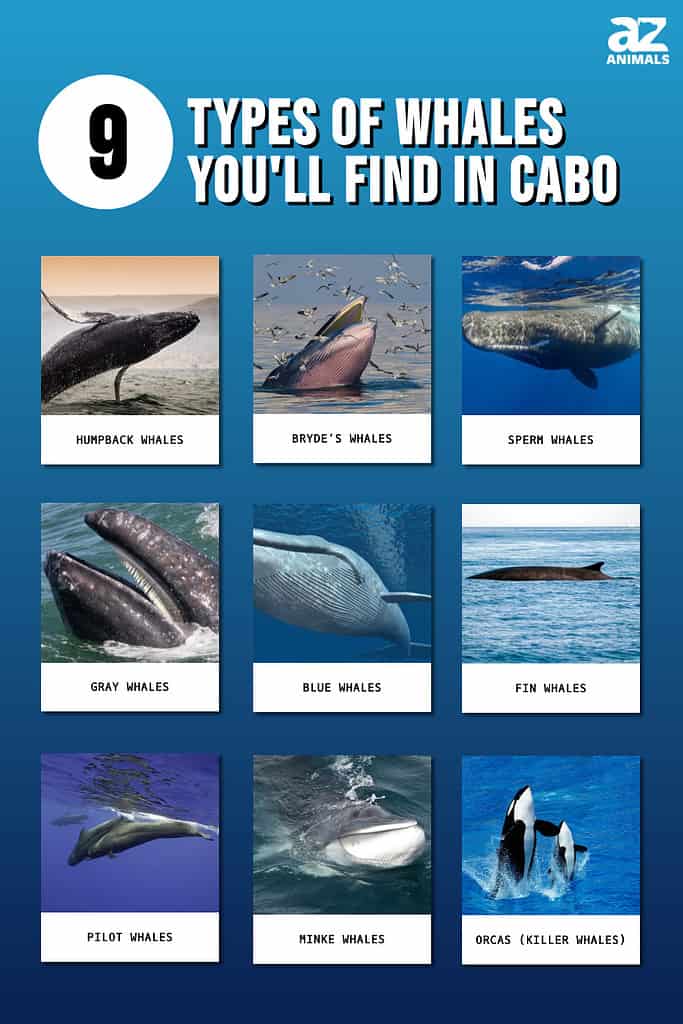
Humpback Whales
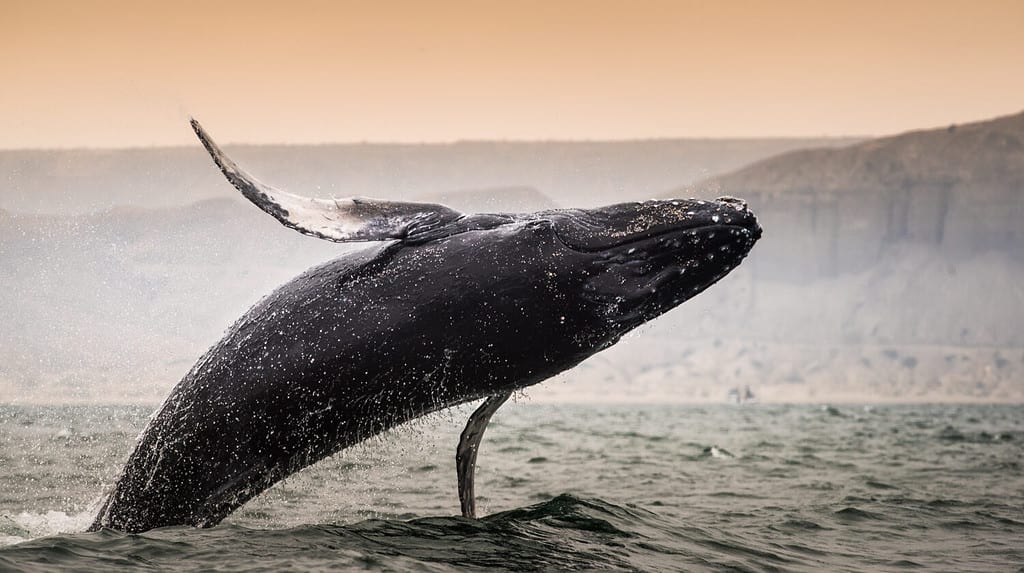
The humpback whale is one of the most well-known and commonly seen species of whales in Cabo. The incredible mammals love to show off, too, so you’re in for a real treat if you see one.
©Christian Vinces/Shutterstock.com
One of the most well-known species of whales, the humpback whale, is also one of the most likely encounters in Cabo. These humpbacks come from the North Eastern Pacific population, with some 18,000 whales among them. They are considered vulnerable, but they do see about six to eight percent population growth each year.
You can identify these beautiful creatures by the iconic humps on their backs (earning them their name). You’ll also see long pectoral fins and black or gray bodies sporting white undersides on their flukes, flippers, and bellies.
The active whale species are truly a delight to behold, as they play and show off regularly for folks in boats. Even more amazing is a mother whale with her young learning how to breach and tail slap.
The best times to see these amazing creatures in Cabo is February to March, though they may be present as early as October.
Bryde’s Whales
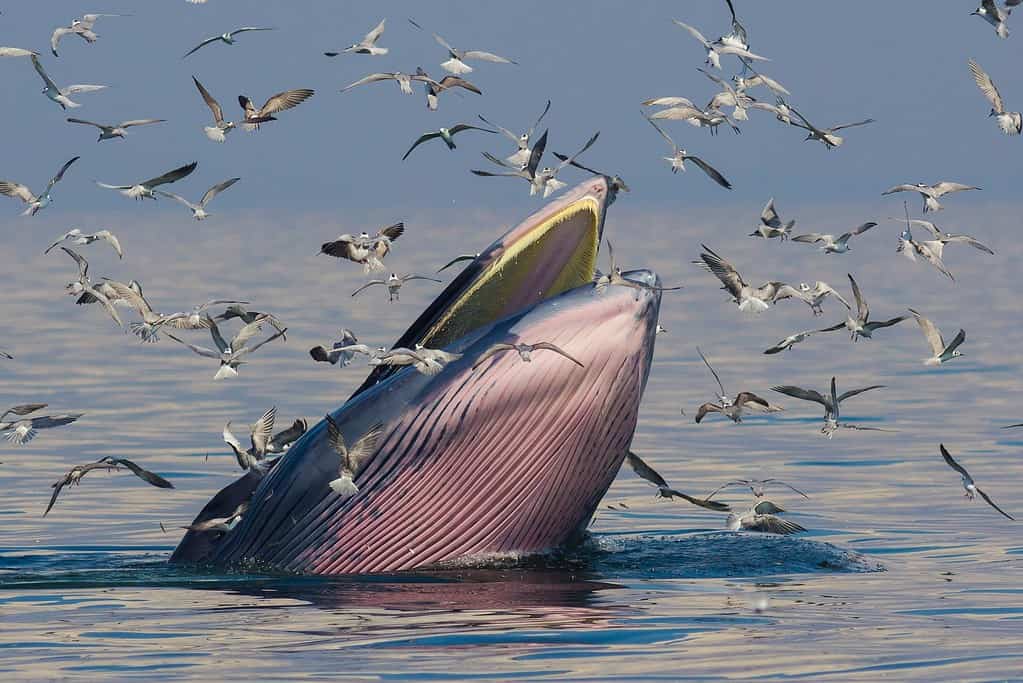
The Bryde’s whale is one of the most unique whales you’ll see in Cabo. They’re the only known baleen whales to prefer warm waters year-round.
©aDam Wildlife/Shutterstock.com
Also, a baleen whale, Bryde’s whale swims the warm waters around Cabo. However, these unique creatures are the only ones who spend their whole lives in tropical and subtropical waters. They have a short migration, with some populations skipping it altogether to stay close to the sunny waters of Cabo San Lucas.
These “resident” Bryde’s whales are some of the most likely cetaceans you’ll find on your whale-watching adventures in Cabo.
Sperm Whales
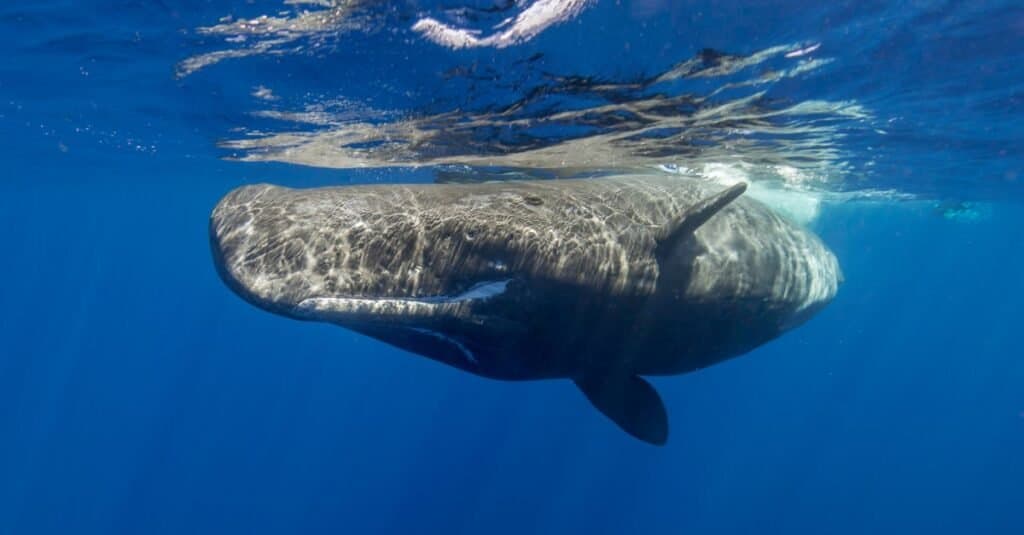
Sperm whales are the largest of all toothed whales and can grow to a maximum length of 52 feet and a weight of 90,000 pounds. These whales don’t actually migrate, so you could potentially see them any time you visit.
©wildestanimal/Shutterstock.com
One unique thing about sperm whales is that they aren’t a migratory species. In fact, these incredible animals live in Cabo year-round. Males make the journey northward, but females stick around raising their young.
Sperm whales live and play in deeper waters, though, so you’ll need to head out away from land. These beauties hunt for squid and other deep-sea food in those locations, particularly near deep ocean trenches. They also happen to be one of the deepest diving mammals in the world, which makes those trenches pretty convenient for some tasty meals.
Sperm whales have uniquely shaped heads, small pectoral fins, and 52 conical teeth (each weighing over 2 pounds!). They also have a single, angled blowhole on their left side. These whales are actually most likely seen in the summer months, as well, making them truly unique whales near Cabo.
Gray Whales
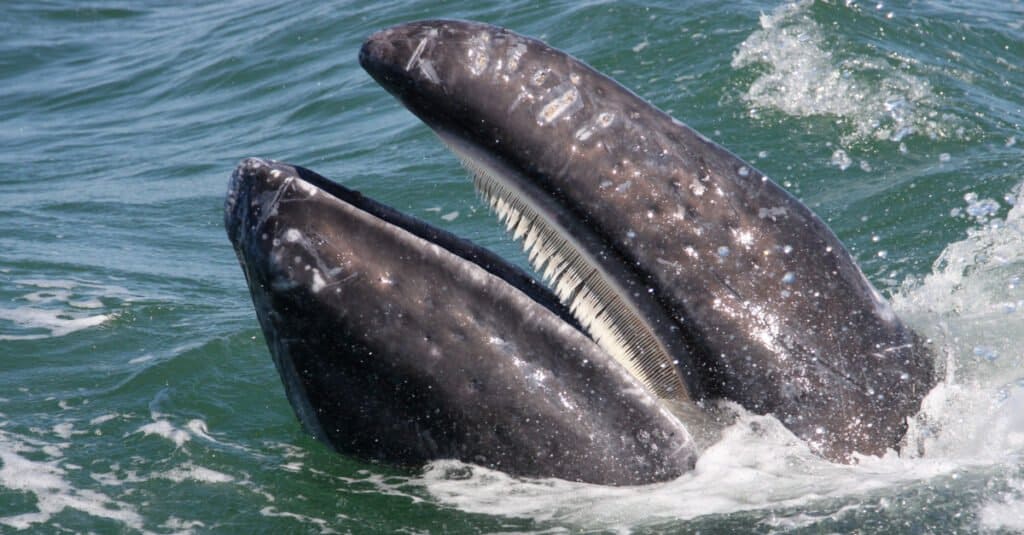
As the name implies, gray whales have gray coloration. These baleen whales in Cabo can be seen from the shore at times!
©jo Crebbin/Shutterstock.com
Frequently seen near Cabo, gray whales are likely to grace your camera screens when you visit during whale-watching season. These beauties tend toward the shoreline, so you might even see some away without a boat. Most folks say they see more whales from whale-watching tours, however, so you’re probably going to want to opt for that for the best viewing possible.
Interestingly, gray whales are more abundant in the Cabo San Lucas area than in most of the world. The playful, inquisitive sea mammals follow one of the longest migrations of any marine mammal on the planet. But they love the lagoons of Baja California Sur for raising their young.
Gray whales often swim right up to the sides of boats and engage in playful displays for folks on boats. For the best viewing, visit Magdalena Bay or Puerto San Carlos between January and March. You’ll likely even some of the calves play!
Blue Whales
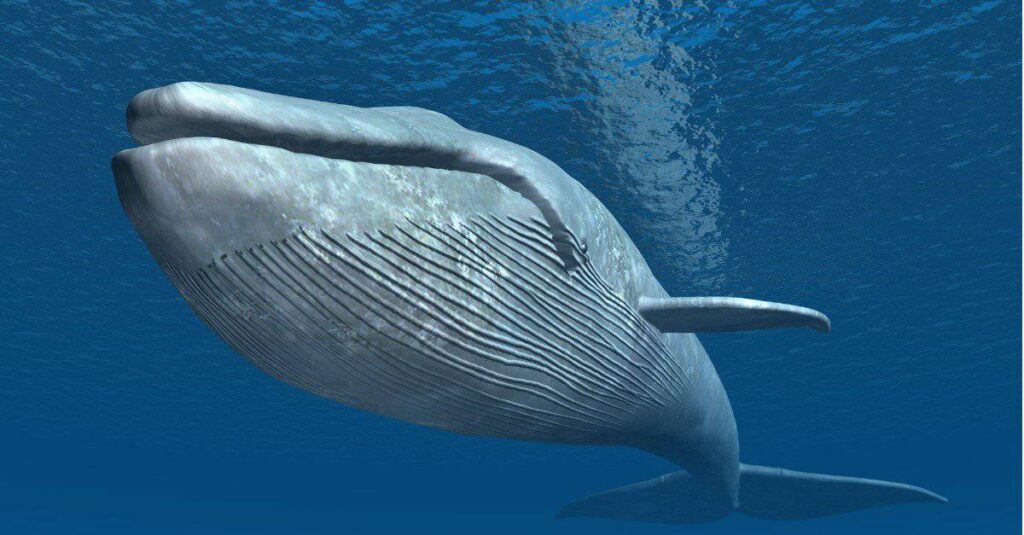
The blue whale is the largest mammal on Earth. The beautiful creatures may sometimes be seen in Cabo during peak whale-watching season.
©iStock.com/MR1805
The largest living animal on the planet, the blue whale is truly a sight to behold. These massive marine mammals may occasionally be seen in Cabo San Lucas. More often, venturing to the Sea of Cortez or Lorento Marine Park, you’ll find them a bit easier.
But if you’re lucky enough to spot one of these incredible animals, you won’t be able to believe it. These giant mammals of the sea thrive in deep water, growing between 80- and 100 feet in length. They weigh up to 330,00 pounds. A young whale often measures 26 feet in length at birth. The best time to see them is near Cabo at Lorento Marine Park between February and March.
Fin Whales
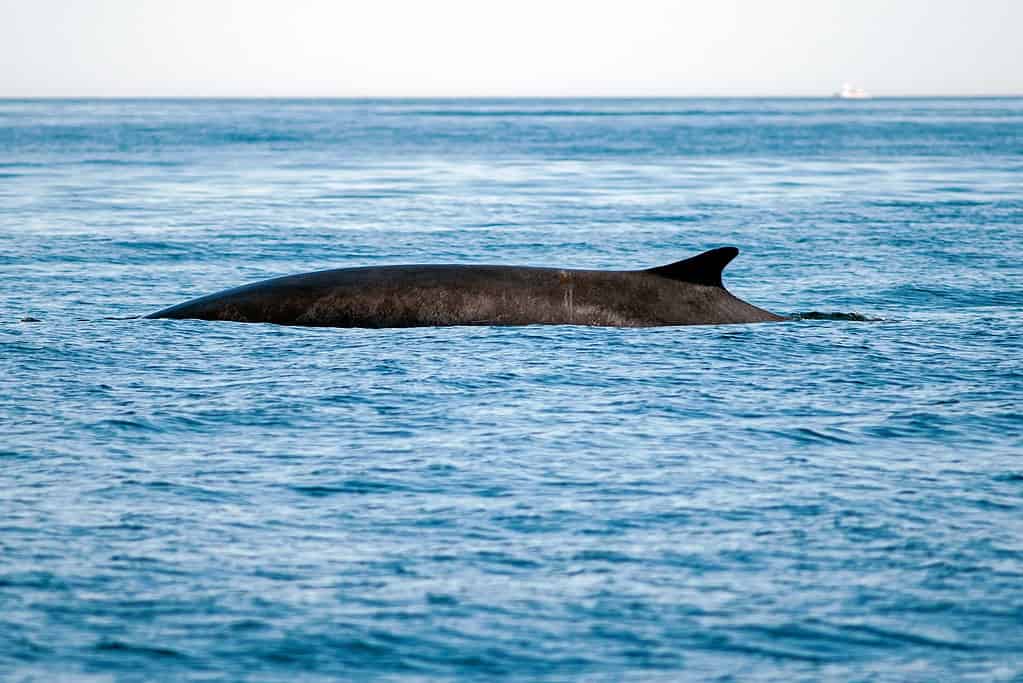
The second largest whale in the world, fin whales may occasionally be seen in Cabo. The fin whale happens to be one of the few species of whales with a dorsal fin.
©ChristopherRM/Shutterstock.com
Next to blue whales, fin whales are the second largest animal on the planet. These gorgeous creatures usually reach as long as 85 feet when they mature. More commonly, they’re closer to 65 feet long. The whales live all over the world and live up to their name. They have massive fins that make them pretty easy to spot and identify.
In Cabo, you’re most likely to see these beauties in February and March. Many folks also recommend heading to Lorento Marine Park for a blue whale watching tour, during which you’re also more likely to see fin whales.
Pilot Whales
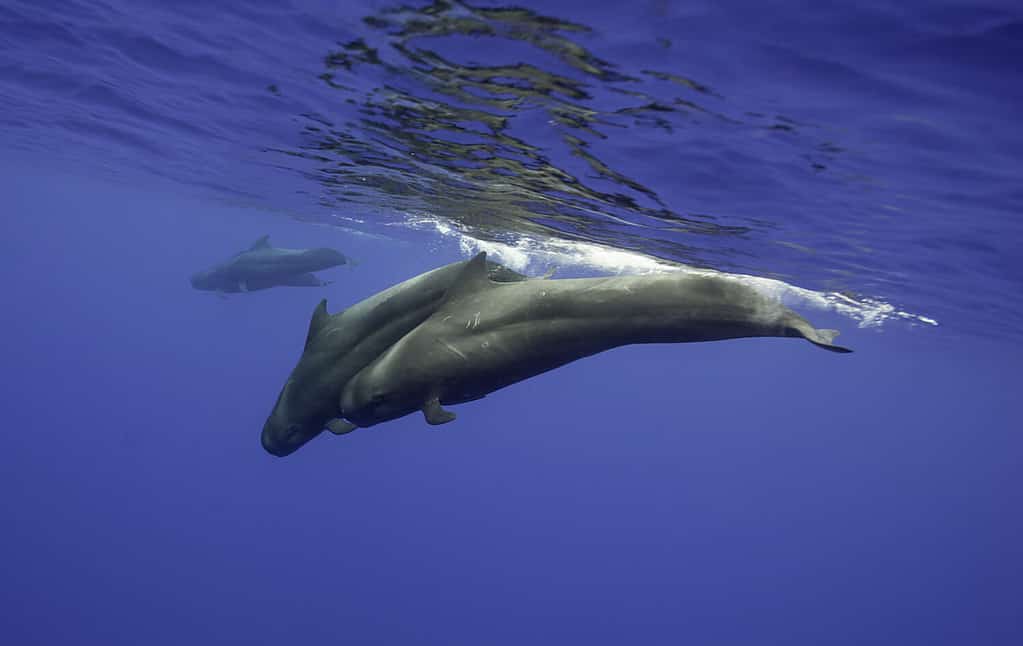
The short-finned pilot whale is technically a dolphin, but according to sea care authorities, they’re a whale. And you’ll likely see these beauties in Cabo.
©wildestanimal/Shutterstock.com
Technically part of the dolphin family, pilot whales typically reach between 12 and 18 feet, depending on their sex. Some males may even hit 24 feet. Full-grown short-finned pilot whales typically weigh 1 to 3 tons, and travel in pods of 25 to 50 whales.
Pilot whales make polygynous families, meaning one male with eight females, typically with three to seven families per pod. Females remain in their birth schools while males leave once they reach maturity.
Pilot whales have bulbous, melon-shaped heads with no beaks and dorsal fins located forward on their bodies. These whales live in tropical and subtropical waters worldwide, based on water depth rather than distance from the shore. However, they are less common on whale watching in Cabo than other species, so you might not spot one on your adventure.
Minke Whales

Far from common, the minke whale may occasionally get spotted in Cabo. The unique animals are easily identified by their unique head shapes.
©Tim Watters/Shutterstock.com
A lesser-known whale, the minke whale is known as the “second smallest baleen whale” in the world. Despite their comparatively small size, you’ll still see them just fine in the waters around Cabo. These gorgeous whales typically measure 24 feet long and weigh up to 10 tons. They’re most definitely not tiny!
The whales come in a black/gray/purple color, with 240 to 360 baleen plates on each side of their mouths. That is, these are the whales with those walls of “filter” teeth. Their gorgeous color functions as camouflage, making the whales look like their bodies and the ocean are one. Even their dorsal fins and blowholes blend in. So, though they’re large enough they may be hard to spot until they’re right on top of you.
These whales typically live 30 to 50 years, with some known to make it to 60 years.
Orcas (Killer Whales)
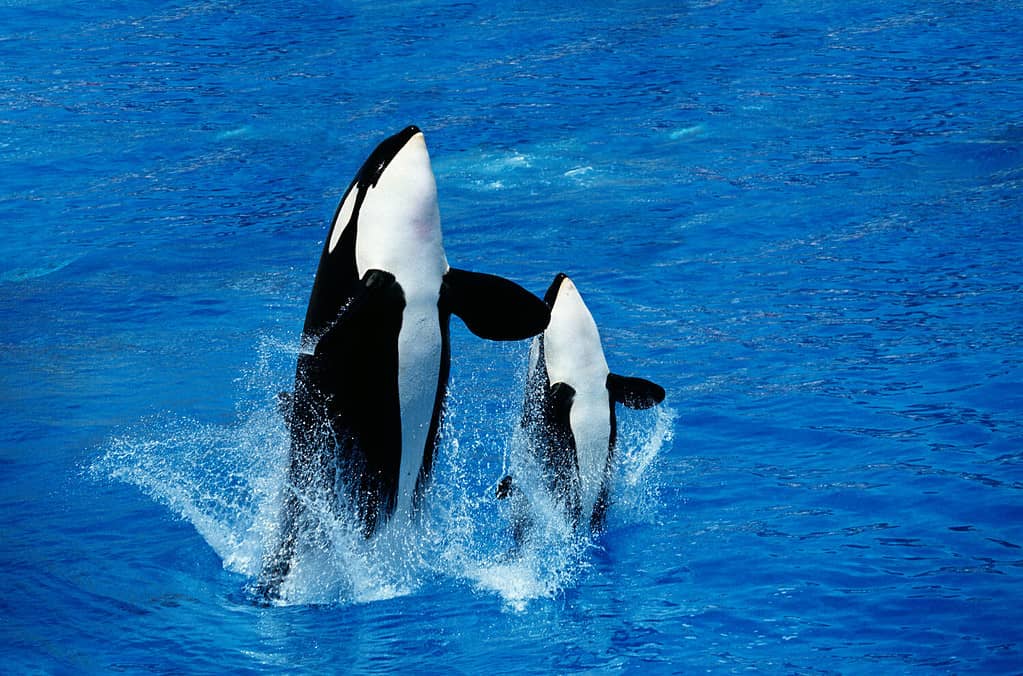
The playful orca, or
killer whale
, may occasionally be spotted on whale-watching tours in Cabo.
©slowmotiongli/Shutterstock.com
While they’re not a particularly common sight in Cabo, orcas, or killer whales, may occasionally be spotted here. The whales generally prefer colder waters, so if you’re hoping to spot these beautiful black and white beauties in Cabo, you’ll want to plan your trip for cooler months.
Don’t get your hopes too high, though, as most companies only report four or five sightings a season.
Orcas technically could be spotted year-round in Cabo, as these whales inhabit every ocean on the planet.
Other Marine Life You Might Spot on Your Whale-Watching Adventures
Apart from the spectacular whale species you might spot on your tour, several other marine animals may be visible. Folks often see
- Bottlenose dolphins
- Sealions
- Hammerhead sharks
- Whale sharks
- Mako sharks
- Sea turtles
- Puffers
- Silky sharks
- Mobula rays (May/June and November/December only)
- Bat rays
- Cow-nose rays
- Eagle rays
- Diamond rays
- Giant Pacific Manta rays (rare)
- Schools of tropical fish
The photo featured at the top of this post is © Andrew Sutton/Shutterstock.com
Thank you for reading! Have some feedback for us? Contact the AZ Animals editorial team.







